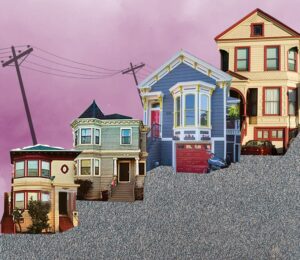When I was surveying the different study abroad programs available to Mills College students, I was spurred by a nearly exclusive interest in enhancing myself as an art historian but also, more specifically, in producing a sparkling transcript.
Europe had been the focus of most of my past classes so it seemed right that I go there for my spring semester. The palette of countries was overwhelming, especially since I was primarily focused on Arcadia, surely the Chimera of global colleges. But gradually I made a decision based upon a process of elimination. France was too modern, Germany too literary, England too civic and Spain too familiar. Italy had the art, and an intimate knowledge of the Renaissance wouldn’t hurt my art history studies.
Yet when one arrives in a foreign country for a five-month residency and finds that, quite opposite of the American experience, the classes are the only stable and serene aspect of an otherwise controversial and challenging lifestyle, one might then feel that she went about searching for programs in an extremely backwards manner.
I had considered Florence as a large museum to ponder under the leadership of committed art historians. I had forgotten that, excepting three-hour urban walking lectures on weekdays, I would be living here.
That explains why the past three weeks have not been the cheerful Italian adventure I had expected. The majority of the first month, in fact, has just been brutal adjustment – a revolution of lifestyle.
The Italian way of life is structured as a social and visible world where each task, such as buying fruit or getting a notebook, happens in a different location and is usually regulated by time of day. This has the effect of creating a highly social, traditional and mobile atmosphere where time is distributed in a phenomenally different way in Italy than in America.
The afternoon siesta is still alive in Florence – all the stores roll down their metal doors for a couple of hours at 1 o’clock and on Sundays shops are closed. You cannot spend time browsing in stores or reading over coffee, but you will spends hours exploring the city and talking with friends.
Around twilight you are expected to stroll around the piazzas and then regard the handsome window displays of the boutiques. If you want to go to a club do not expect it to open before midnight, or for you to leave before 4 a.m.
This new experience of time has slowly transformed how I recall what I miss about California. I do not think about the hours I spent comfortably studying at cafes or of all my favorite belongings. I think instead about all the museums I wish I’d spent more time in, the parks I neglected, the walks I didn’t take, the fashions I wasn’t brave enough to wear, the architecture I didn’t have the confidence to sketch. Suddenly, with the visibility and delight I’m learning from the Italians, I’m getting the courage to enjoy myself.




